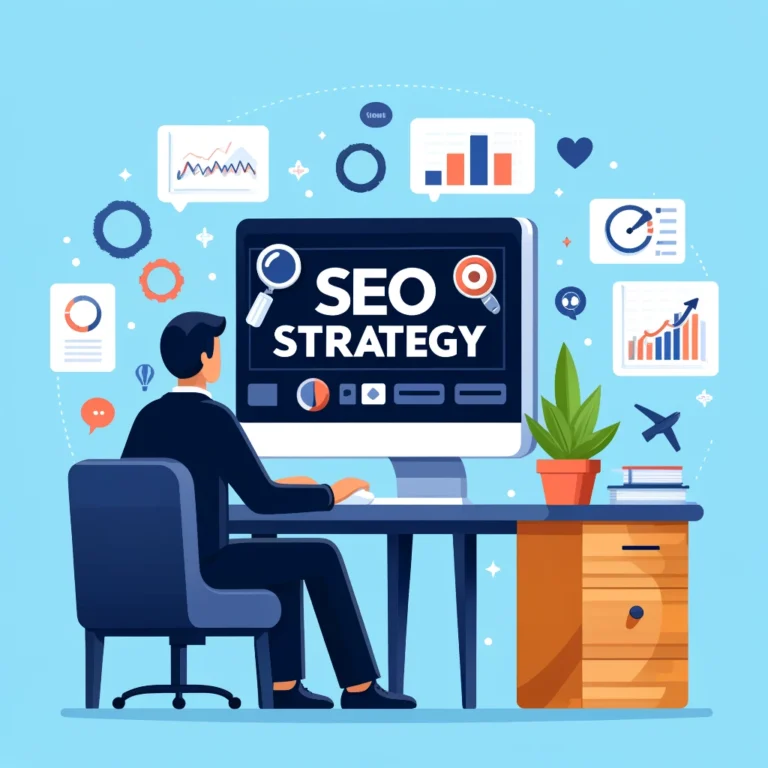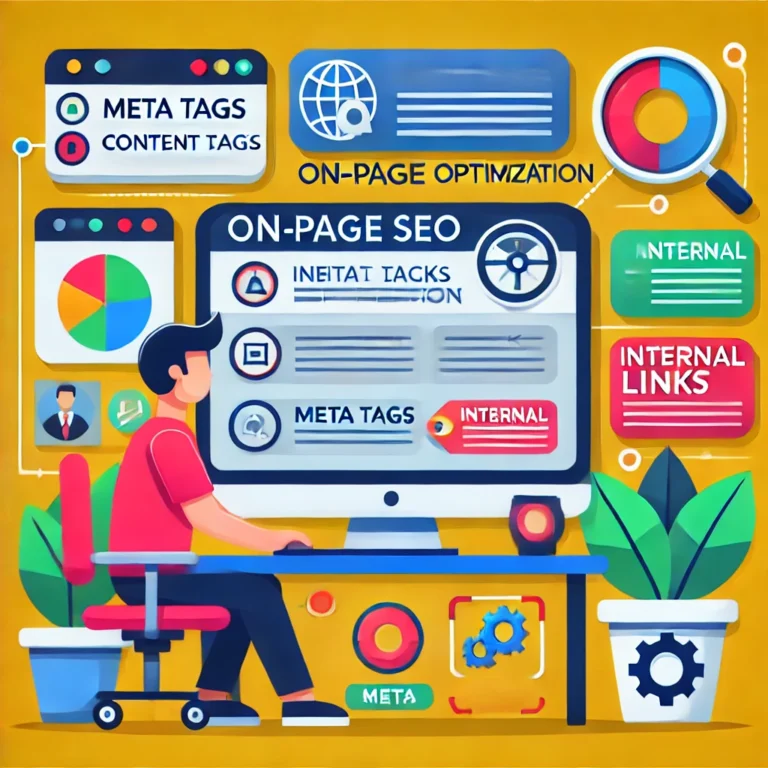Understanding SEO: A Step-by-Step Guide for Business Owners
The SEO process involves multiple steps to ensure your business achieves online visibility, improved rankings, and, ultimately, success. Below, I’ll provide an in-depth exploration of each step, so you understand how they contribute to your growth and why each is crucial for achieving your business goals.

1. Understanding Your Goals
Every successful SEO campaign starts by understanding your business objectives. This isn’t just about knowing what your business does, but about digging deeper into your goals, challenges, and ambitions. I begin by having conversations with you to learn about the growth areas you want to focus on – whether it’s gaining more leads, increasing online sales, or establishing brand authority. By understanding your target market, business model, and the specific outcomes you’re aiming for, I can create a strategy that directly aligns with your vision.
This in-depth approach allows me to develop tailored SEO strategies that aren’t one-size-fits-all but are designed to support your unique needs. For instance, if you’re looking to expand into a new market, I identify opportunities that can give you traction within that audience. Whether it’s gaining visibility for new product lines or expanding your brand’s local reach, the strategy begins with a solid understanding of what success looks like to you.

2. Conducting a Technical SEO Audit
A technical audit is like an X-ray for your website – it helps uncover any underlying issues that could prevent your website from ranking well or delivering a good user experience. During the audit, I check for things like broken links, website speed, mobile compatibility, and indexing errors. These issues, if not resolved, can prevent search engines from properly crawling and indexing your site, leading to lower rankings and reduced visibility.
The goal is to identify and fix these obstacles so your website functions seamlessly. For example, slow-loading pages can frustrate visitors and drive them away. By improving your page speed, I ensure your users stay on your site longer, leading to more engagement and better conversion rates. This step creates a solid foundation, making it easier for other SEO tactics, like content creation and link building, to succeed.

3. Keyword Research & Competitor Analysis
Keyword research and competitor analysis are crucial components in creating a targeted SEO strategy. Keyword research is about finding the phrases that your potential customers use when looking for services or products like yours. I use data-driven tools to identify both high-value keywords and niche, long-tail keywords that bring qualified traffic. It’s not just about getting people to your site – it’s about attracting visitors who are ready to take action.
Competitor analysis helps us identify what’s working for others in your industry. By examining your competitors’ keyword rankings, content strategies, and backlink profiles, I pinpoint the opportunities they may be missing or identify areas where you can perform better. This process gives us a roadmap to not only match their success but also to surpass them by capitalising on untapped opportunities.

4. Crafting Your SEO Strategy
An effective SEO strategy is much like a blueprint that guides all actions towards achieving your business goals. After gaining insights from the technical audit, keyword research, and understanding your objectives, I create a customised SEO strategy tailored specifically to your business. This strategy covers content creation, on-page optimisation, link building, EEAT optimisation, and other techniques to ensure your website reaches the right audience and drives the right kind of traffic.
The SEO strategy I develop for you is designed with long-term sustainability in mind – meaning it’s not about quick wins that fade, but building a strong foundation that ensures consistent growth. By combining content that speaks directly to your audience’s needs, building quality links, and making your website technically sound, we can achieve lasting visibility and rankings that contribute directly to your bottom line.

5. Optimising Your Money Pages
“Money pages” are the key landing pages on your website that convert visitors into paying customers. These pages could be service pages, product pages, or any page that drives significant revenue. I focus on optimising these pages with targeted keywords, engaging content, and clear calls-to-action to maximise their effectiveness.
The goal is to make sure that these pages are both easy to find in search engines and compelling once visitors arrive. For example, I ensure that product descriptions are detailed and speak directly to customer pain points, while also making sure the page layout guides users effortlessly towards making a purchase. By placing emphasis on these high-value pages, I aim to boost conversions and enhance your return on investment.

6. On-Page Optimisation
On-page optimisation involves refining each element of your web pages to make them more search engine friendly. This includes everything from meta titles and descriptions to header tags, content, and internal linking. The content on your site is carefully optimised to ensure that it includes the keywords identified during the research phase, but in a way that feels natural and useful for readers.
Beyond just keyword integration, on-page optimisation also focuses on ensuring your content matches the searcher’s intent. If someone is looking for “how to choose the right golf clubs,” I want your page to provide detailed and useful information that addresses this question comprehensively. By providing value and answering user queries effectively, on-page optimisation increases your chances of ranking higher and driving relevant traffic.

7. Conversion Rate Optimisation (CRO)
SEO brings visitors to your website, but Conversion Rate Optimisation ensures those visitors take the desired action – whether that’s filling out a contact form, making a purchase, or subscribing to your newsletter. I analyse how users interact with your site, identifying obstacles that may prevent them from converting. This could involve rearranging page elements, simplifying forms, or improving the clarity of calls-to-action.
Other examples could be changing the colour of a button or the wording of a headline might have a big impact on conversions. CRO is about making small, data-driven changes that add up to a big difference in turning visitors into loyal customers.

8. Link Building
Link building is about establishing your website as a credible and authoritative source. Search engines see backlinks – links to your website from other trusted sites – as a vote of confidence. The more quality links you have, the more trustworthy your website appears, which positively impacts your rankings.
I use different tactics to acquire high-quality backlinks, including outreach to industry-related websites, contributing guest posts, and building partnerships. This process involves reaching out to other businesses, bloggers, and influencers in your niche to create valuable relationships that result in links back to your site. The focus is always on acquiring links from relevant, authoritative sources to ensure they have a lasting positive impact on your site’s performance.
I know understanding the SEO process can be complex, but it doesn’t have to be overwhelming. I hope this breakdown helps you see how each step contributes to making your business more visible, bringing in more traffic, and achieving sustainable growth. If you have any questions or would like to discuss how this process can be applied to your specific business, just let me know. With more than 16 years working as a freelance SEO specialist, I’m here to help!

